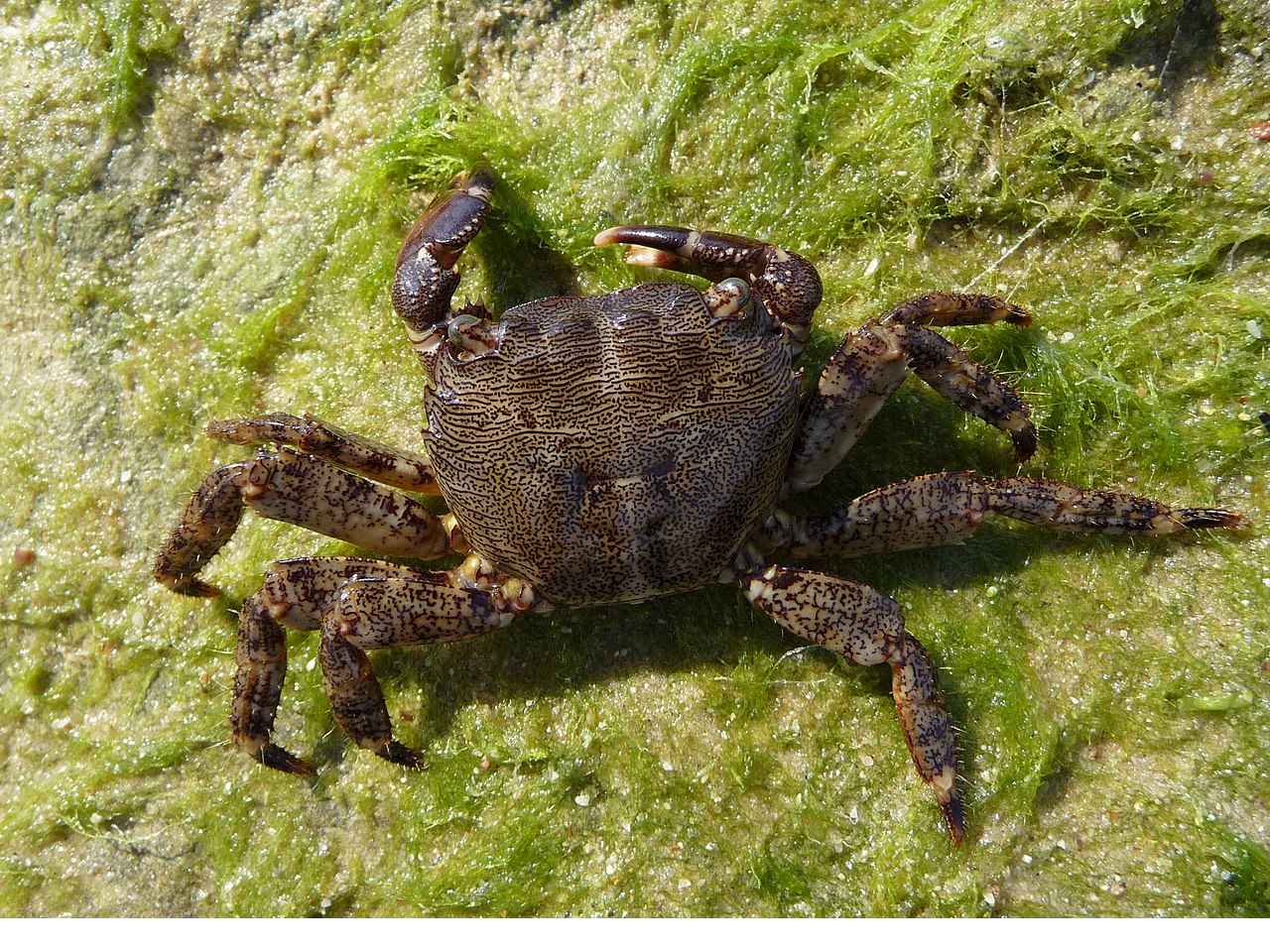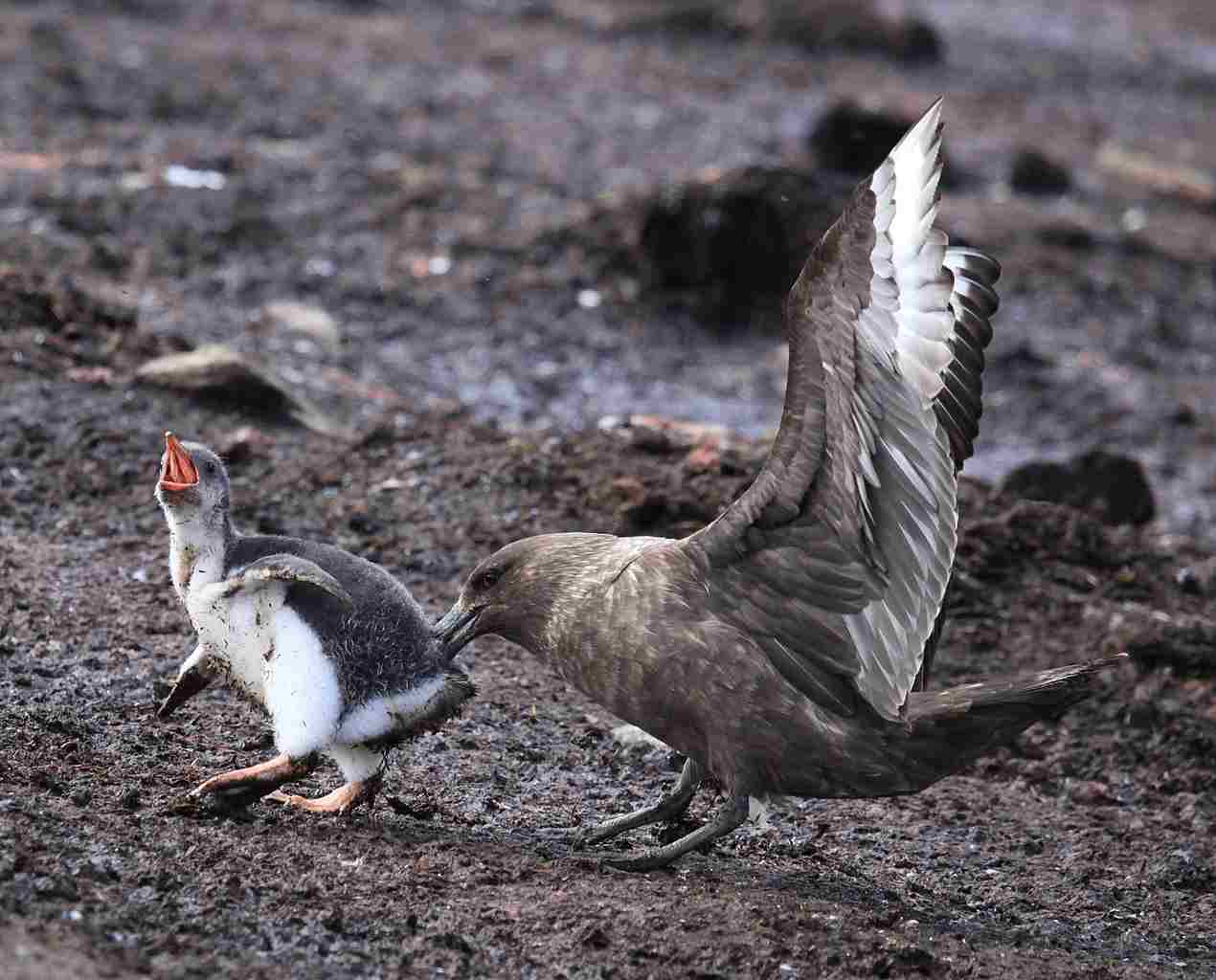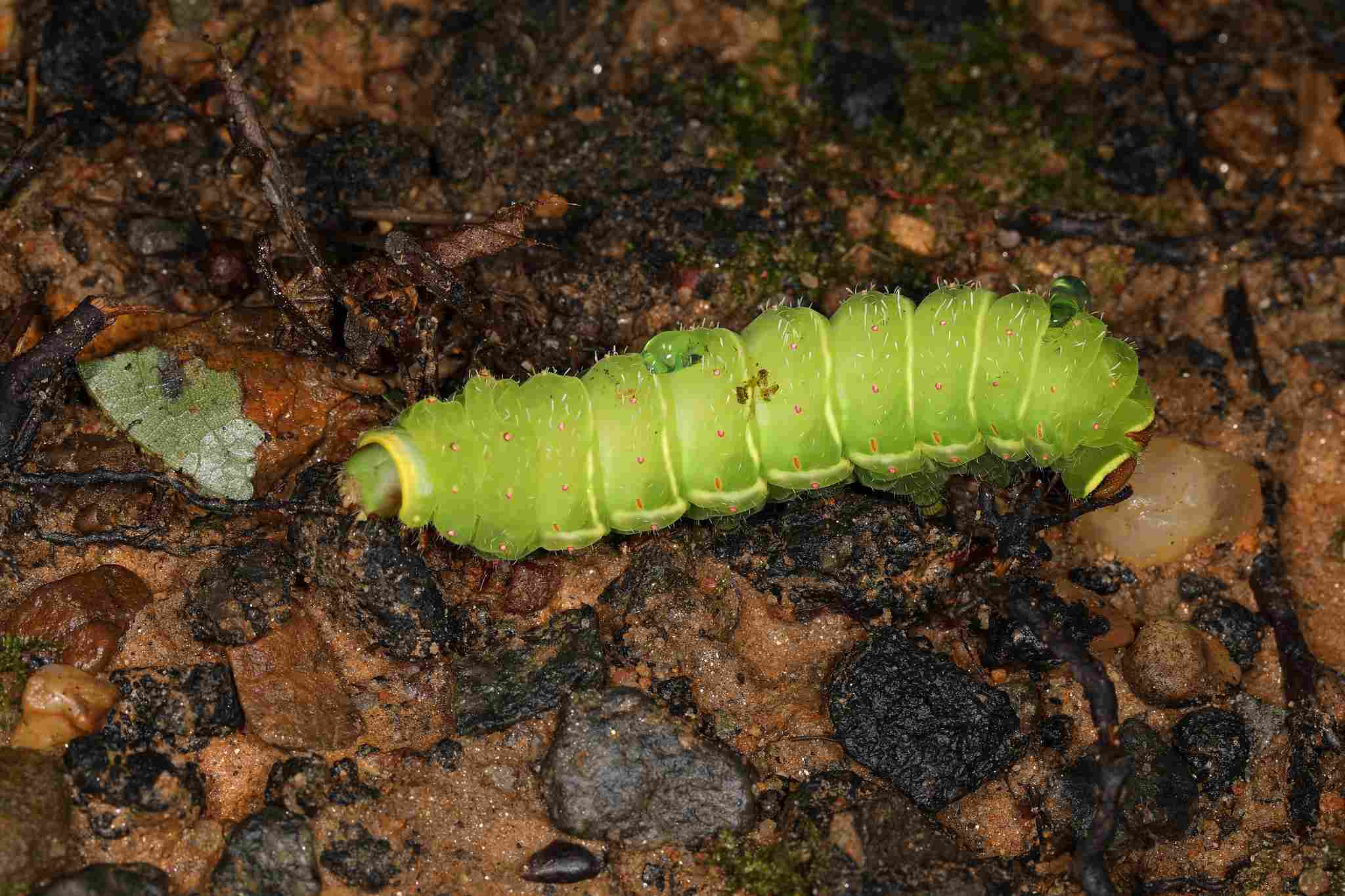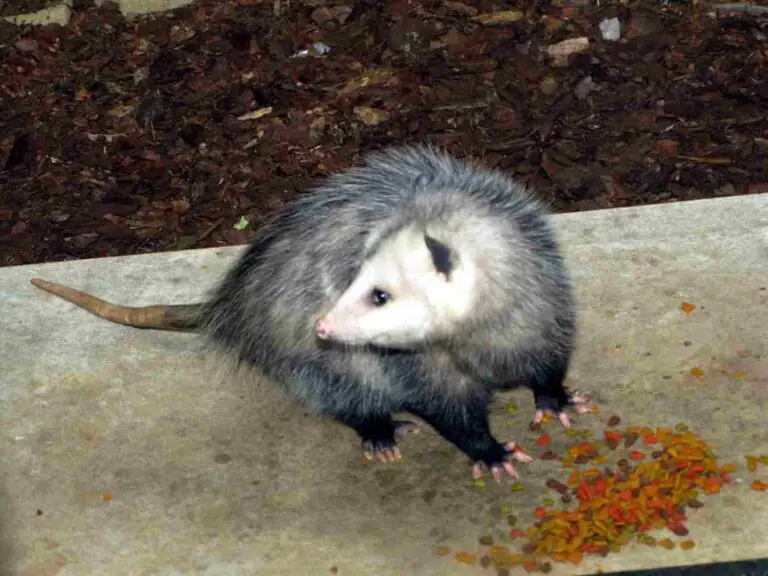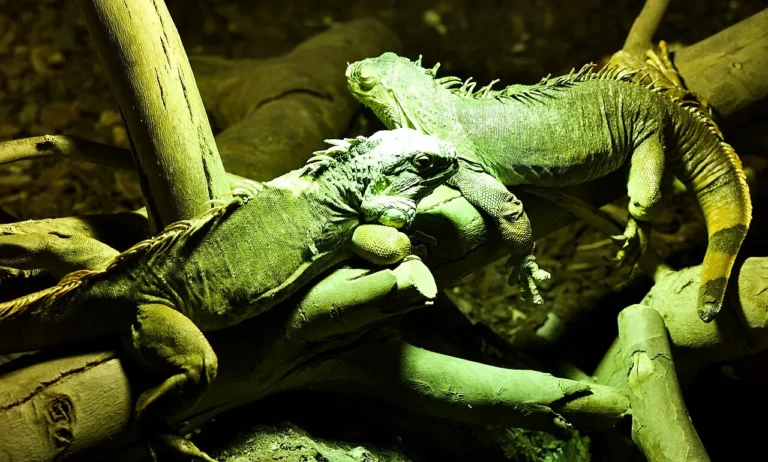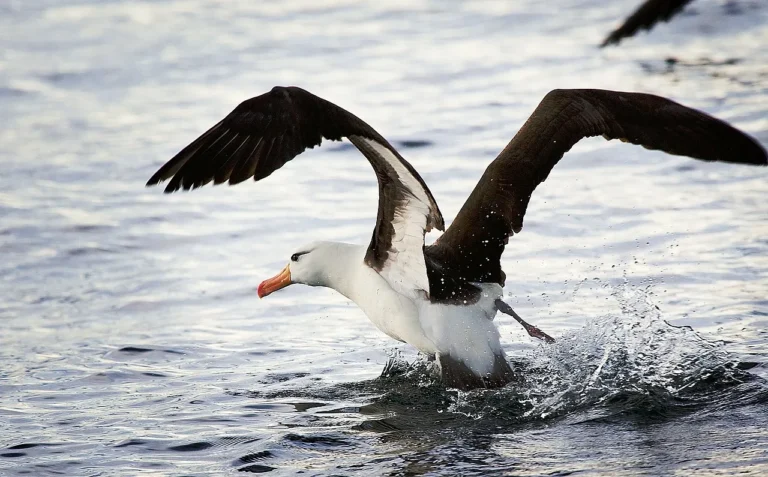Is a Fish a Consumer? Trophic Role and Position of Fish Discussed
A fish is a consumer because it is incapable of manufacturing its own food, and must feed on other organisms to gain the nutrients and energy required fruits survival.
This article discusses the consumer role of fish, and answers multiple related questions, as follows;
Is a Fish a Producer or Consumer?
A fish is not a producer, but is rather a consumer because unlike producers (which include vascular and non-vascular plants) it is not able to synthesize food or biomass from sunlight or chemical compounds.
Reasons Why Fish is Not a Producer
1. Lack of Photosynthetic Pigmentation
One of the reasons why fish are not considered producers is their lack of photosynthetic pigmentation. Photosynthetic pigmentation refers to the presence of pigments, such as chlorophyll, that enable organisms to convert sunlight into energy through the process of photosynthesis. While some organisms, like plants and algae, have specialized cells and pigments that allow them to carry out photosynthesis, fish do not possess these features.
Photosynthesis is a vital process that allows producers to create their own food by converting sunlight, carbon dioxide, and water into organic compounds, such as glucose. This ability to produce their own food is what distinguishes producers from consumers in the food chain. However, fish lack the necessary pigments and cellular structures to carry out photosynthesis, making them unable to produce their own food.
Instead, fish rely on external sources of food to meet their energy needs. They are classified as heterotrophs, which means they obtain their energy by consuming other organisms. Fish have adapted various feeding strategies to obtain their food, including herbivory, carnivory, and omnivory. Some fish species primarily feed on plants and algae, while others feed on smaller animals or even other fish.
Without the ability to carry out photosynthesis, fish are dependent on the energy stored in organic compounds produced by other organisms. They consume these organic compounds, break them down through digestion, and utilize the released energy for their own metabolic processes. This reliance on external sources of food places fish in the category of consumers rather than producers.
2. Inability to Synthesize Organic Compounds from Inorganic Resources
Another reason why fish are not considered producers is their inability to synthesize organic compounds from inorganic resources. Unlike plants and some microorganisms, fish lack the biochemical pathways and enzymes necessary to convert inorganic substances into organic compounds.
Photosynthesis, the process by which producers convert sunlight, carbon dioxide, and water into organic compounds, is a complex biochemical process that requires specific enzymes and cellular structures. While plants and algae have evolved to possess these specialized mechanisms, fish have not.
Fish lack the necessary cellular structures, such as chloroplasts, which are responsible for photosynthesis in plants. Without chloroplasts, fish are unable to capture and utilize sunlight to convert carbon dioxide and water into glucose or other organic compounds. This limitation prevents fish from producing their own food and places them in the category of consumers.
Instead of synthesizing organic compounds from inorganic resources, fish rely on consuming other organisms that have already produced these compounds. They obtain their energy and nutrients by feeding on plants, algae, or other animals in their ecosystem. This reliance on external sources of organic compounds further supports the classification of fish as consumers.
Furthermore, fish have evolved specific physiological adaptations to enhance their ability to consume and digest other organisms. They possess specialized teeth, jaws, and digestive systems that allow them to break down and extract nutrients from their prey. These adaptations are not found in producers, further highlighting the distinction between fish and organisms capable of synthesizing their own food.
3. Lack of Typical Physiological Features of Producers
Fish are not considered producers due to their lack of typical physiological features associated with producers, such as roots and leaves. These features are essential for plants and some microorganisms to carry out photosynthesis and produce organic compounds. Without these structures, fish are unable to generate their own food through the conversion of sunlight, carbon dioxide, and water.
Roots play a crucial role in the absorption of water and nutrients from the soil in plants. They provide a pathway for water to reach the rest of the plant and facilitate the uptake of essential minerals. Additionally, roots anchor the plant in the ground, providing stability and support. Fish, on the other hand, do not possess roots as they live in aquatic environments where the availability of water and nutrients is different from terrestrial ecosystems.
Leaves are another characteristic feature of producers that fish lack. Leaves contain chloroplasts, which are responsible for photosynthesis. Chloroplasts contain the pigment chlorophyll, which captures sunlight and converts it into energy. This energy is then used to convert carbon dioxide and water into glucose, the primary organic compound produced during photosynthesis. Fish do not have leaves or chloroplasts, making them incapable of harnessing sunlight for energy production.
The absence of roots and leaves in fish is a significant factor contributing to their classification as consumers rather than producers. These physiological features are essential for the synthesis of organic compounds from inorganic resources, a defining characteristic of producers. Without the ability to carry out photosynthesis, fish must rely on external sources of organic compounds for their energy and nutrient needs.
Instead of producing their own food, fish obtain energy and nutrients by consuming other organisms. They are heterotrophic, meaning they rely on the consumption of autotrophs (such as plants and algae) or other heterotrophs (such as smaller animals) to meet their nutritional requirements. This mode of feeding further distinguishes fish from producers, as they depend on external sources rather than internal synthesis.
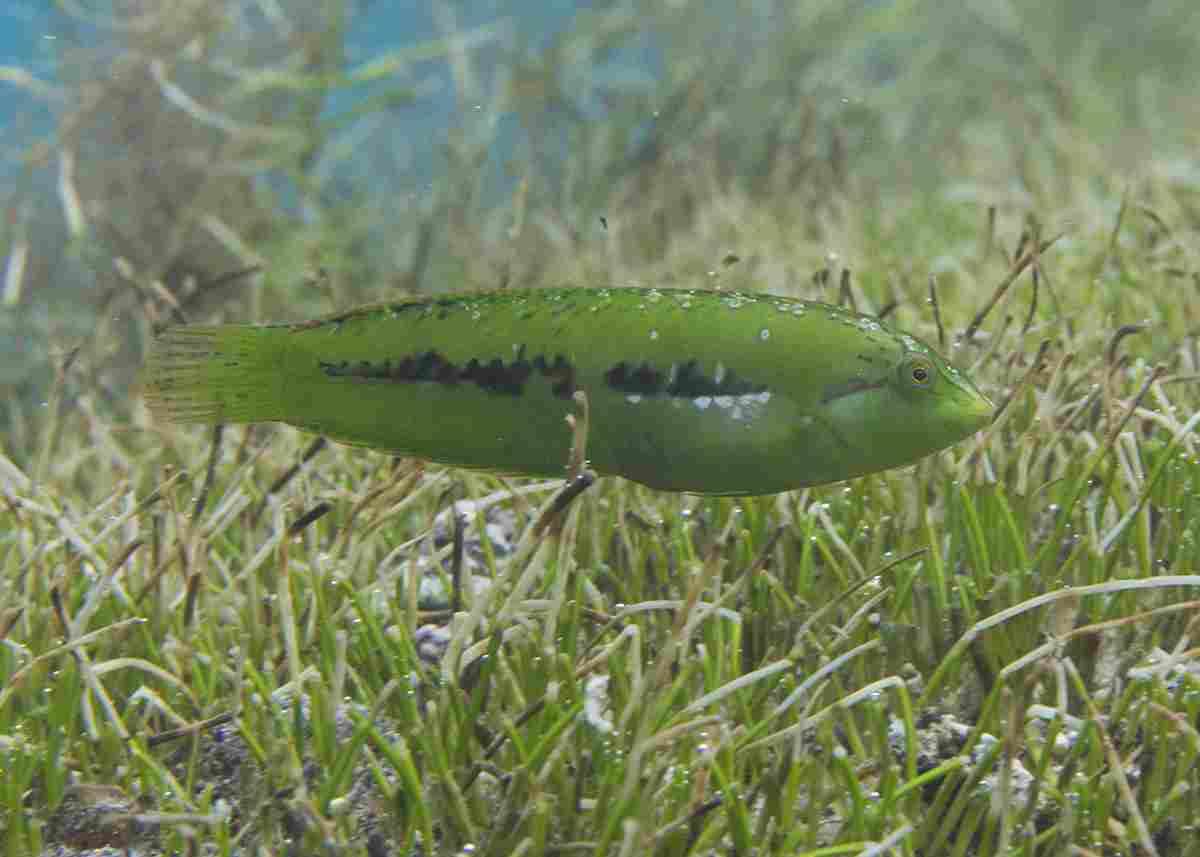
4. Heterotrophic Mode of Feeding
Fish are not autotrophic organisms, meaning they cannot produce their own food through photosynthesis. Instead, they rely on a heterotrophic mode of feeding, which involves consuming other organisms for their energy and nutrient needs. This is one of the key reasons why fish are classified as consumers rather than producers.
In the aquatic ecosystem, fish play a vital role as consumers, feeding on a variety of organisms including plants, algae, and other animals. They are part of a complex food web, where they occupy different trophic levels based on their size and feeding behavior.
The heterotrophic mode of feeding in fish is a result of their physiological and anatomical characteristics. Unlike plants, fish do not possess chloroplasts or the pigment chlorophyll, which are necessary for photosynthesis. Without the ability to capture sunlight and convert it into energy, fish must obtain their energy from external sources.
Fish exhibit a diverse range of feeding strategies, depending on their species and habitat. Some fish are herbivorous, feeding primarily on plants and algae. They have specialized teeth and digestive systems that allow them to break down and extract nutrients from plant matter. Other fish are carnivorous, preying on smaller animals. They have sharp teeth and powerful jaws that enable them to capture and consume their prey.
Fish can also be omnivorous, consuming both plant and animal matter. This flexibility in their feeding behavior allows them to adapt to different food availability and ecological niches. For example, in freshwater ecosystems, fish like tilapia and carp are known to feed on both plants and small invertebrates.
The heterotrophic mode of feeding in fish has important ecological implications. By consuming other organisms, fish help to regulate population sizes and maintain the balance of the ecosystem. They also contribute to nutrient cycling by excreting waste products, which can be used as a source of nutrients for other organisms.
What Type of Consumer is a Fish?
Fish can be found at all consumer levels in the aquatic ecosystem, including primary, secondary, tertiary, and quaternary. This classification is based on their size and feeding behavior, with larger and more predatory or carnivorous species occupying higher positions than smaller and omnivorous or herbivorous species.
In the marine ecosystem, for example, a small rabbitfish is considered a primary consumer as it primarily feeds on macroalgae and phytoplankton. On the other hand, Atlantic cod is classified as a secondary consumer, while bluefin tuna is a tertiary consumer. At the top of the food chain, we have apex predators like the great white shark, which is a quaternary consumer. These progressions reveal the dominance and versatility of fish across the aquatic food chain.
Fish play a crucial role in maintaining the balance and stability of aquatic ecosystems. As consumers, they contribute to the transfer of energy and nutrients through the food web. By occupying different trophic levels, fish help regulate population sizes and control the abundance of their prey. This, in turn, has cascading effects on the entire ecosystem.
Primary consumers, such as herbivorous fish, feed directly on primary producers like plants and algae. They play a vital role in controlling the growth of these autotrophic organisms. By consuming them, primary consumers prevent excessive growth and maintain the health of the ecosystem. Additionally, primary consumers serve as a food source for higher-level consumers, transferring energy and nutrients up the food chain.
Secondary consumers, like carnivorous fish, prey on primary consumers. They occupy a higher trophic level and play a crucial role in regulating the population sizes of primary consumers. By controlling the abundance of primary consumers, secondary consumers indirectly influence the growth of primary producers. This trophic interaction helps maintain the balance between autotrophs and heterotrophs in the ecosystem.
Tertiary consumers, such as large predatory fish, occupy an even higher trophic level. They feed on both primary and secondary consumers, exerting top-down control on the food web. Tertiary consumers play a critical role in regulating the population sizes of lower-level consumers, preventing them from becoming too abundant and disrupting the ecosystem. They also contribute to the flow of energy and nutrients through the food chain.
At the top of the aquatic food chain or web, we find apex predators like the great white shark. These quaternary consumers have no natural predators and play a significant role in maintaining the overall health and balance of the ecosystem. As top predators, they help control the population sizes of lower-level consumers, preventing any one species from dominating the ecosystem.
The trophic role and position of fish in the aquatic ecosystem highlight their importance in maintaining the ecological balance. From primary consumers to apex predators, fish contribute to the flow of energy and nutrients, regulate population sizes, and shape the structure of the food web. Understanding the different types of consumers that fish can be is crucial for comprehending the dynamics of aquatic ecosystems and implementing effective conservation strategies.
Is a Fish a Primary Consumer?
Some fish, such as rabbitfish, parrotfish, and surgeonfish, are considered primary consumers in the aquatic ecosystem. These fish primarily feed on primary producers like phytoplankton and macroalgae. They play a crucial role in controlling the growth of autotrophic organisms and maintaining the health of the ecosystem. Despite being small compared to higher-level consumers, they have a significant impact on the food web.
While these fish are primarily herbivores, they may also prey on zooplankton like krill and some crustaceans like shrimp. This omnivorous behavior allows them to diversify their diet and obtain essential nutrients from different sources. By consuming both primary producers and small invertebrates, they contribute to the transfer of energy and nutrients through the food chain.
Additionally, primary consumers like rabbitfish, parrotfish, and surgeonfish serve as a vital food source for secondary and tertiary consumers. Larger predatory fish rely on these primary consumers as a source of energy and nutrients. By being a link between primary producers and higher-level consumers, primary consumers play a crucial role in the flow of energy and the stability of the ecosystem.
The feeding behavior of primary consumers is essential for maintaining the balance between autotrophs and heterotrophs in the aquatic ecosystem. By consuming primary producers, they prevent excessive growth and maintain the health of the ecosystem. This regulation of primary producers indirectly influences the population sizes of higher-level consumers, ensuring a balanced and sustainable food web.
Is a Fish a Secondary Consumer?
A fish can be classified as a secondary consumer in a food chain or ecosystem when its primary sources of food are other consumers. This means that these fish primarily feed on other animals rather than directly consuming primary producers like plants or algae. Examples of fish that fall into the category of secondary consumers include herring, sardine, yellow-eye mullet, and juveniles of larger fish species such as tuna and Atlantic cod.
The diet of secondary consumer fish is predominantly carnivorous, meaning that they primarily consume other animals as their main source of nutrition. Their diet often consists of zooplankton, small fish, and macroscopic invertebrates. Unlike primary consumers like parrotfish, which primarily feed on algae, secondary consumer fish have a diet that is more focused on animal-based food sources.
One characteristic that distinguishes secondary consumer fish from primary consumers is their smaller trophic footprint and predatory capacity. While primary consumers play a crucial role in controlling the growth of autotrophic organisms, secondary consumers have a more limited impact on the overall ecosystem. They occupy a middle position in the food chain, feeding on primary consumers and serving as a food source for higher-level consumers.
Secondary consumer fish are an important link in the transfer of energy and nutrients through the food chain. By consuming primary consumers, they contribute to the flow of energy from lower trophic levels to higher trophic levels. This energy transfer is essential for the overall functioning and stability of the ecosystem.
In addition to their role in energy transfer, secondary consumer fish also play a part in regulating the population sizes of primary consumers. By preying on primary consumers, they help to control their population growth and maintain a balance in the ecosystem. This regulation is crucial for preventing the overconsumption of primary producers and ensuring the overall health of the ecosystem.
It is important to note that the classification of a fish as a secondary consumer is not fixed and can vary depending on the specific ecosystem and food web dynamics. Some fish species may exhibit a more diverse diet, consuming both primary producers and other consumers. However, in general, fish that primarily feed on other consumers and occupy an intermediate position in the food chain can be classified as secondary consumers.
Tertiary Consumer Fish Species
Tertiary consumer fish species are characterized by their large size and highly predatory behavior. These fish occupy the highest position in the food chain among fish species, feeding on both secondary consumers and other tertiary consumers. Their adaptation as efficient predators allows them to play a crucial role in regulating the population sizes of lower trophic levels and maintaining the balance of the ecosystem.
One example of a tertiary consumer fish species is the northern pike. This fish is known for its voracious appetite and aggressive hunting behavior. With its sharp teeth and streamlined body, the northern pike is well-equipped to capture and consume a variety of prey, including smaller fish, amphibians, and even small mammals. Its position as a tertiary consumer highlights its role as a top predator in the aquatic food chain.
Another example of a tertiary consumer fish species is the barracuda. Barracudas are known for their sleek and powerful bodies, which enable them to swiftly chase down their prey. These fish primarily feed on smaller fish, using their sharp teeth to capture and immobilize their prey. With their predatory prowess, barracudas help to control the population sizes of both secondary consumers and smaller fish species, contributing to the overall balance of the marine ecosystem.
The bluefin tuna is yet another example of a tertiary consumer fish species. These large and fast-swimming fish are highly sought after for their meat, but they also play a vital ecological role. Bluefin tuna are apex predators, feeding on a variety of prey including smaller fish, squid, and crustaceans. Their position as tertiary consumers reflects their importance in regulating the population sizes of lower trophic levels and maintaining the health of the marine ecosystem.
Tertiary consumer fish species have a significant impact on the energy flow and nutrient cycling within the food chain. By consuming both secondary consumers and other tertiary consumers, they help to control the population sizes of these lower trophic levels. This regulation is essential for preventing the overconsumption of primary consumers and maintaining the overall balance of the ecosystem.
In addition to their role in population control, tertiary consumer fish species also contribute to the transfer of energy from lower trophic levels to higher trophic levels. As top predators, they accumulate the energy obtained from consuming lower trophic levels and pass it on to higher trophic levels through predation. This energy transfer is crucial for sustaining the populations of higher-level consumers and maintaining the overall stability of the ecosystem.
It is important to note that the classification of a fish species as a tertiary consumer is not absolute and can vary depending on the specific ecosystem and food web dynamics. Some fish species may exhibit a more diverse diet, consuming a combination of primary producers, secondary consumers, and other tertiary consumers. However, in general, fish species that primarily feed on other consumers and occupy the highest position in the food chain can be classified as tertiary consumers.
Quaternary Consumer Fish Species
Quaternary consumer fish species represent the largest group of predatory fish in the aquatic ecosystem. These fish occupy the highest trophic level in the food chain, feeding on tertiary consumers and other quaternary consumers. Their role as top predators is crucial in maintaining the balance and stability of the ecosystem.
One example of a quaternary consumer fish species is the great white shark. Known for its immense size and powerful predatory behavior, the great white shark is a formidable apex predator. With its sharp teeth and strong jaws, it preys on a variety of marine animals, including seals, sea lions, and smaller fish. The great white shark’s position as a quaternary consumer highlights its role in regulating the population sizes of lower trophic levels and ensuring the overall health of the marine ecosystem.
Another example of a quaternary consumer fish species is the arapaima. Found in the Amazon River basin, the arapaima is one of the largest freshwater fish in the world. It is known for its ability to breathe air, allowing it to survive in oxygen-depleted waters. As a quaternary consumer, the arapaima feeds on smaller fish, crustaceans, and even small mammals. Its predatory behavior contributes to the regulation of the population sizes of lower trophic levels in the Amazon ecosystem.
The alligator gar is yet another example of a quaternary consumer fish species. This large and predatory fish is native to North America and is characterized by its long, slender body and sharp teeth. The alligator gar primarily feeds on smaller fish, amphibians, and even waterfowl. Its position as a quaternary consumer emphasizes its role in controlling the population sizes of lower trophic levels and maintaining the ecological balance in freshwater habitats.
The whale shark is a unique example of a quaternary consumer fish species. Despite its massive size, the whale shark is a filter feeder, primarily consuming plankton and small fish. As the largest fish species in the world, the whale shark plays a vital role in the transfer of energy from lower trophic levels to higher trophic levels. By consuming vast amounts of plankton, it indirectly supports the populations of higher-level consumers in the marine food web.

Quaternary consumer fish species have a significant impact on the structure and dynamics of the aquatic ecosystem. As top predators, they help to regulate the population sizes of lower trophic levels, preventing overconsumption and maintaining the balance of the food chain. Their predatory behavior also contributes to the transfer of energy from lower trophic levels to higher trophic levels, supporting the populations of apex predators and maintaining the overall stability of the ecosystem.
It is important to note that the classification of a fish species as a quaternary consumer may vary depending on the specific ecosystem and food web dynamics. Some fish species may exhibit a more diverse diet, consuming a combination of tertiary consumers and other quaternary consumers. However, in general, fish species that primarily feed on other consumers and occupy the highest trophic level can be classified as quaternary consumers.
Is a Fish a Decomposer?
No, fish are not considered decomposers. While some fish, such as catfish, eels, and lampreys, may exhibit scavenging behavior by feeding on the remains of dead fish and other aquatic organisms, this behavior is not dominant or elaborate enough to classify them as typical decomposers or detritivores.
Decomposers play a crucial role in breaking down organic matter and recycling nutrients in ecosystems. They are responsible for the decomposition of dead plants and animals, releasing nutrients back into the environment for other organisms to utilize. However, fish do not possess the necessary physiological adaptations or behaviors to fulfill this role effectively.
Fish are primarily known for their heterotrophic mode of feeding, meaning they obtain their energy by consuming other organisms. They are not equipped with the specialized structures or enzymes required for the decomposition of organic matter. Instead, fish rely on a diet consisting mainly of autotrophs (such as algae and plants) or heterotroph prey (such as smaller fish or invertebrates).
Furthermore, fish lack the saprophytic features, functions, or behaviors that are characteristic of decomposers. Saprophytic organisms, such as fungi and bacteria, are specialized decomposers that obtain their nutrients by breaking down dead organic matter externally. They secrete enzymes that break down complex organic compounds into simpler forms that can be absorbed and utilized. Fish, on the other hand, do not possess these saprophytic features or engage in external decomposition processes.
It is important to note that while some fish may contribute to the decomposition process indirectly by consuming dead organisms, their role in nutrient recycling is relatively minor compared to true decomposers. Fish primarily function as consumers within the food web, playing important roles as primary, secondary, or tertiary consumers depending on their trophic level.
Reasons Why Fish are Not Decomposers
1. No Saprophytic Features. Functions or Behaviors
One of the reasons why fish are not considered decomposers is their lack of saprophytic features, functions, or behaviors. Saprophytic organisms play a crucial role in the decomposition process by breaking down organic remains or waste through the secretion of enzymes that facilitate biodegradation. However, fish do not possess these enzymes, which are essential for the decomposition process.
Fish, as consumers, may consume organic matter, but they do not directly decompose it. Unlike saprophytic organisms, fish do not actively participate in the breakdown of dead organisms or organic waste. Instead, they rely on other organisms, such as bacteria and fungi, to carry out the decomposition process.
Fish have evolved to be efficient predators or filter feeders, depending on their species and habitat. They have specialized anatomical features and physiological adaptations that enable them to capture and consume prey. Their digestive systems are designed to extract nutrients from the consumed organisms, rather than breaking them down for decomposition.
Furthermore, fish exhibit a heterotrophic mode of feeding, which means they rely on consuming other organisms for their energy and nutrient requirements. They primarily feed on autotrophs (organisms that produce their own food through photosynthesis) or other heterotrophs (organisms that obtain their energy by consuming other organisms). This feeding behavior further supports their role as consumers rather than decomposers.
2. Mainly Feed on Autotrophs or Heterotrophic Prey
One of the reasons why fish are not considered decomposers is their feeding behavior. Fish mainly feed on autotrophs or heterotrophid prey, which further supports their role as consumers rather than decomposers.
Autotrophs are organisms that produce their own food through photosynthesis, such as plants and algae. Heterotrophs, on the other hand, obtain their energy by consuming other organisms. Fish, as consumers, rely on these autotrophs and heterotrophic prey as their primary source of food.
Fish have evolved various feeding strategies and adaptations to capture and consume their prey. Some fish species are herbivores, feeding primarily on autotrophs like algae and aquatic plants. They have specialized mouthparts and digestive systems that allow them to efficiently extract nutrients from plant matter.
Other fish species are carnivores or omnivores, feeding on a wide range of heterotroph prey. They may consume smaller fish, invertebrates, or even other aquatic organisms. These predatory fish have sharp teeth, strong jaws, and excellent hunting skills to capture and consume their prey.
By mainly feeding on autotrophs or heterotroph prey, fish obtain the energy and nutrients they need for growth, reproduction, and survival. They do not directly participate in the decomposition process by breaking down dead organisms or organic waste.
Instead, fish play a crucial role in the transfer of energy and nutrients within aquatic ecosystems. They act as intermediaries between primary producers (autotrophs) and higher-level consumers. When fish consume autotrophs, they transfer the energy and nutrients stored in the plants or algae to themselves. When fish are consumed by higher-level consumers, such as larger predatory fish or humans, the energy and nutrients are further transferred up the food chain.
In this way, fish contribute to the flow of energy and nutrients through the ecosystem, but they do not actively decompose organic matter. They rely on other organisms, such as bacteria and fungi, to break down dead organisms and organic waste through the process of decomposition.
Is a Fish a Producer, Consumer or Decomposer?
When considering the trophic role and position of fish, it becomes clear that fish are consumers in aquatic ecosystems. Unlike producers, such as plants and algae, fish cannot manufacture their own food through photosynthesis. Instead, they rely on external sources of energy and nutrients to survive and thrive.
Fish lack the necessary photosynthetic pigmentation and physiological features that are characteristic of producers. They do not possess chloroplasts or other structures that allow them to convert sunlight into usable energy. As a result, fish are unable to synthesize organic compounds from inorganic resources, further supporting their role as consumers.
Furthermore, fish exhibit a heterotrophic mode of feeding, which distinguishes them from producers. They rely on consuming other organisms, whether autotrophs or heterotrophs, to obtain the energy and nutrients they need. This feeding behavior aligns with the characteristics of consumers rather than producers.
While fish are not producers or decomposers, they play a crucial role as consumers within aquatic ecosystems. They occupy various trophic levels, depending on their diet and the organisms they consume. Some fish species are primary consumers, feeding directly on autotrophs like algae and aquatic plants.
Other fish species are secondary consumers, preying on smaller fish or invertebrates. They obtain their energy and nutrients by consuming these lower trophic level organisms. Additionally, there are tertiary consumer fish species that feed on larger predatory fish or other secondary consumers.
In some cases, fish can even be considered quaternary consumers, occupying the highest trophic level within a food chain. These fish species consume other fish that are already consumers themselves, further highlighting their role as consumers rather than producers or decomposers.
It is important to note that fish do not directly participate in the decomposition process. They do not possess the necessary saprophytic features, functions, or behaviors to facilitate the biodegradation of dead organisms or organic waste. Instead, fish rely on other organisms, such as bacteria and fungi, to break down organic matter through the process of decomposition.
FAQs
1. Is a Fish a Consumer or Producer?
A fish is classified as a consumer rather than a producer. Unlike plants and some microorganisms, fish do not have the ability to produce their own food through photosynthesis. Instead, they rely on consuming other organisms or organic matter to obtain the energy and nutrients they need to survive.
As consumers, fish play an important role in the food chain. They are considered primary consumers when they feed directly on producers, such as algae or plants. Some fish species, like rabbitfish and parrotfish, are known to be primary consumers as they primarily feed on algae. By consuming these producers, fish help to control their population and maintain the balance of the ecosystem.
It’s important to note that not all fish are primary consumers. The classification of a fish as a primary, secondary, or tertiary consumer depends on its position in the food chain and its feeding habits. A small fish, for example, can be classified as a primary consumer if it primarily feeds on algae or plants. On the other hand, a large fish may be classified as a secondary or even a tertiary consumer if it feeds on smaller fish or other animals.
2. Can Fish Be Primary Consumers?
Yes, fish can be primary consumers. Some fish species, such as rabbitfish and parrotfish, primarily feed on algae, making them primary consumers in the food chain. These fish play a crucial role in maintaining the balance of the ecosystem by controlling the population of algae.
Rabbitfish and parrotfish are known for their herbivorous diet, consuming large quantities of algae. Algae, as producers, are the primary source of energy in aquatic ecosystems. By feeding on algae, these fish obtain the energy and nutrients they need to survive and grow. In doing so, they help regulate the population of algae, preventing overgrowth and maintaining a healthy ecosystem.
It is important to note that not all fish are primary consumers. The classification of a fish as a primary consumer depends on its feeding habits and position in the food chain. Some fish species may have a more varied or complex diet, and may be classified as secondary or tertiary consumers, depending on their feeding preferences.
3. Is a Fish a Consumer Yes or No?
Yes.
4. Is a Fish a Producer?
No, a fish is not a producer. In the food chain, producers are organisms that can produce their own food through photosynthesis, such as plants and algae. Fish, on the other hand, are consumers. They obtain their energy by consuming other organisms, either plants or other animals.
Fish play an important role as consumers in aquatic ecosystems. They are classified as either herbivores, carnivores, or omnivores, depending on their diet. Herbivorous fish primarily feed on plants and algae, while carnivorous fish feed on other animals. Omnivorous fish have a diet that includes both plants and animals.
While fish are not producers, they do contribute to the overall productivity of aquatic ecosystems. When fish consume other organisms, they release nutrients back into the water through their waste. These nutrients can then be used by plants and algae, which in turn support the food chain.
5. Are Fish Eggs Producers or Consumers?
Fish eggs, also known as roe, go through an embryonic stage where they act as consumers rather than producers. During this stage, fish eggs rely on nutrients from animal sources and cannot produce their own food through photosynthesis. This makes them consumers in the food chain.
Fish eggs are typically laid by female fish and are fertilized by male fish. Once fertilized, the eggs develop and undergo various stages of growth before hatching into fry. During this development process, the eggs rely on the nutrients stored within them and absorb additional nutrients from their surrounding environment.
The embryonic stage of fish eggs is crucial for their growth and development. It is during this stage that the eggs obtain the necessary nutrients to support their growth and prepare them for hatching. These nutrients come from the surrounding water, which contains microscopic organisms and organic matter that serve as food for the developing eggs.
As the fish eggs consume these nutrients, they gradually grow and develop into fully formed fish embryos. Once they hatch, the fry will then transition into their respective roles as consumers in the aquatic ecosystem.
6. Is a Large Fish a Primary Consumer?
When it comes to the role of large fish in the food chain, they are typically not considered primary consumers. Instead, they tend to occupy higher trophic classifications such as secondary, tertiary, or even quaternary consumers.
Large fish, such as sharks or marlins, have a significant impact on the ecosystem due to their predatory nature. They feed on smaller fish, crustaceans, and even other marine organisms. This means that they rely on consuming other consumers rather than being primary producers themselves.
As secondary consumers, large fish play a crucial role in regulating the population of smaller fish and maintaining the balance within the aquatic ecosystem. They help control the abundance of their prey, preventing any potential overpopulation that could disrupt the delicate equilibrium of the food chain.
Furthermore, as tertiary or quaternary consumers, large fish can accumulate toxins and pollutants that may be present in the environment. This is known as biomagnification, where the concentration of harmful substances increases as it moves up the food chain. Consequently, large fish can serve as indicators of the overall health of the ecosystem.
7. What Type of Consumer is a Small Fish?
When considering the role of a small fish in the food chain, it is important to understand its position as a consumer. In most cases, a small fish can be classified as a primary consumer. This is due to its consumption of phytoplankton, which are microscopic plants that serve as a primary food source in aquatic ecosystems. By feeding on phytoplankton, small fish play a vital role in transferring energy from the lower trophic levels to higher levels within the food chain.
The small scale of trophic impact of a small fish is another factor that contributes to its classification as a primary consumer. While larger fish may have a more significant impact on the ecosystem as secondary or tertiary consumers, small fish primarily rely on consuming producers, such as phytoplankton, algae, or other small organisms. Their feeding habits and trophic interactions are essential for maintaining the balance and stability of the aquatic ecosystem.
It is worth noting that the classification of a small fish as a primary consumer may vary depending on the specific species and its ecological niche. Some small fish may also consume other small organisms, such as zooplankton or small invertebrates, which can place them in the category of secondary consumers. However, in general, the consumption of primary producers like phytoplankton remains a significant part of their diet.
Understanding the role of small fish as primary consumers helps us appreciate their importance in the food chain and the overall functioning of aquatic ecosystems. By consuming primary producers, they contribute to the transfer of energy and nutrients, supporting the growth and survival of higher trophic levels. Their presence and interactions with other organisms are crucial for maintaining the delicate balance of the ecosystem.
8. Is a Small Fish a Primary Consumer?
Yes, in most cases, a small fish can be classified as a primary consumer. As mentioned earlier, primary consumers play a crucial role in the food chain by consuming primary producers like phytoplankton. Small fish mostly rely on consuming these producers, making them an important part of the aquatic ecosystem.
The classification of a small fish as a primary consumer may vary depending on the specific species and its ecological niche. Some small fish may also consume other small organisms, such as zooplankton or small invertebrates, which can place them in the category of secondary consumers. However, the consumption of primary producers remains a significant part of their diet.
Also, the relatively-small scale of feeding of these small fish often qualifies them as primary consumers, even where they are omnivorous and feed on animal materials like zooplankton.
By consuming primary producers, small fish contribute to the transfer of energy and nutrients within the ecosystem. This supports the growth and survival of higher trophic levels, including larger fish and other predators. Their role as primary consumers helps maintain the delicate balance of the aquatic ecosystem.
9. Is a Small Fish a Secondary Consumer?
A small fish is rarely classified as a secondary consumer. While medium-sized and large fish are more commonly categorized as secondary consumers, small fish typically occupy the role of primary consumers in the food chain. They mainly feed on primary producers like phytoplankton, contributing to the transfer of energy and nutrients within the aquatic ecosystem.
The classification of a small fish as a secondary consumer is infrequent due to their relatively limited predatory capacity and size. Secondary consumers typically consume primary consumers, such as small fish, as well as primary producers. However, small fish generally do not occupy this role in the food chain.
It is important to note that the classification of a small fish as a secondary consumer may vary depending on the specific species and its ecological niche. Some small fish may consume other small organisms, such as zooplankton or small invertebrates, which can place them in the category of secondary consumers. However, the consumption of primary producers remains a significant part of their diet.
10. Is a Fish a Second Level Consumer?
A fish can occupy different levels in the food chain, including being a second level consumer. The position of a fish in the food chain depends on its size and predatory capacity.
In larger aquatic ecosystems, where there is a diverse range of species and a complex food web, fish can often be found as second level consumers. These fish typically feed on smaller fish or other primary consumers, such as crustaceans or insects. By consuming these organisms, they obtain energy and nutrients that have been transferred from the primary producers.
However, it is important to note that not all fish are second level consumers. Smaller fish, for example, are more commonly categorized as primary consumers. They primarily feed on phytoplankton or other primary producers, contributing to the energy flow within the ecosystem.
The classification of a fish as a second level consumer is also influenced by its predatory capacity. Some fish species have a higher predatory capacity and are more likely to consume other consumers rather than primary producers. These fish can occupy the second level in the food chain.
Overall, the position of a fish as a second level consumer depends on its size, predatory capacity, and the specific dynamics of the ecosystem it inhabits.
11. What Type of Consumer is a Fish in the Food Chain
A fish in the food chain can occupy different consumer levels depending on its feeding behaviors and physiological features. Fish can be categorized as primary, secondary, tertiary, or quaternary consumers.
As primary consumers, fish primarily feed on phytoplankton or other primary producers in the ecosystem. They play a crucial role in transferring energy from the lower trophic levels to higher levels. By consuming these primary producers, fish obtain the energy and nutrients necessary for their survival.
Some fish species exhibit predatory behaviors and consume other consumers rather than primary producers. These fish can be classified as secondary consumers. They feed on smaller fish or other primary consumers, contributing to the energy flow within the food chain.
In larger aquatic ecosystems with complex food webs, fish can also be tertiary or quaternary consumers. Tertiary consumers feed on secondary consumers, while quaternary consumers feed on tertiary consumers. These fish occupy higher trophic levels and play a vital role in regulating the population dynamics of the ecosystem.
12. Is a Big Fish a Producer, Consumer, or Decomposer?
When considering the role of a big fish in the ecosystem, it is important to understand its feeding habits and position in the food chain. A big fish is a consumer, as it obtains its energy and nutrients by consuming other organisms. However, it is not a producer or decomposer.
As a consumer, a big fish plays a crucial role in the energy flow within the ecosystem. It feeds on smaller fish or other primary consumers, contributing to the transfer of energy from lower trophic levels to higher levels. By consuming these organisms, the big fish obtains the necessary energy for its survival and growth.
Unlike producers, such as plants or phytoplankton, big fish do not have the ability to produce their own food through photosynthesis. They rely on consuming other organisms to meet their nutritional needs. Additionally, big fish do not function as decomposers, which are responsible for breaking down organic matter and recycling nutrients in the ecosystem.
13. Are Big Fish Carnivores?
Yes, many big fish are carnivores. They have a diet primarily composed of other organisms, such as smaller fish, crustaceans, and even other aquatic animals. Some big fish, like eels and certain catfish species, can be opportunistic and omnivorous, meaning they will consume a variety of food sources including both plant and animal matter.
Being carnivores, big fish play a crucial role in maintaining the balance of the aquatic ecosystem. They are often at the top of the food chain and act as predators, regulating the population of their prey species. By consuming smaller fish and other organisms, big fish help control their numbers and prevent overpopulation.
Their carnivorous nature is also influenced by their physiological characteristics. Big fish typically have sharp teeth and strong jaws that enable them to capture and consume their prey effectively. They may also have specialized adaptations, such as streamlined bodies or camouflage, to aid in hunting and capturing their food.
14. Is a Large Fish a Tertiary Consumer?
Yes, a large fish can be considered a tertiary consumer in certain food chains. Tertiary consumers are organisms that feed on secondary consumers, which in turn feed on primary consumers. Some examples of large fish that can be classified as tertiary consumers include the northern pike and barracuda.
In a typical food chain, primary consumers, such as small fish or plankton, are consumed by secondary consumers like larger fish or crustaceans. These secondary consumers are then preyed upon by larger predators, which are the tertiary consumers.
However, it’s important to note that the position of a large fish in the food chain may vary depending on the specific ecosystem and the availability of prey. In some cases, a large fish may occupy a different trophic level, such as being a secondary consumer or even a quaternary consumer.
Conclusion
* This article has explored various aspects of fish and their role in the food chain. We have discussed whether fish are consumers or producers, their classification as primary, secondary, or tertiary consumers, and the factors that determine their position in the food chain.
Additionally, we have examined the role of large fish as predators and their classification as carnivores. Overall, fish play a crucial role in maintaining the balance of aquatic ecosystems and serve as an important food source for both humans and other marine organisms.
* To summarize, fish can be considered consumers in the food chain as they rely on other organisms for their energy and nutrients. They can be primary consumers, feeding on plants or algae, or secondary and tertiary consumers, preying on smaller fish or invertebrates.
The classification of fish in the food chain depends on their size, diet, and the specific ecosystem they inhabit. Large fish, such as the northern pike and barracuda, can be classified as tertiary consumers. They play a vital role in regulating the population of their prey species and maintaining the overall health of the ecosystem.

